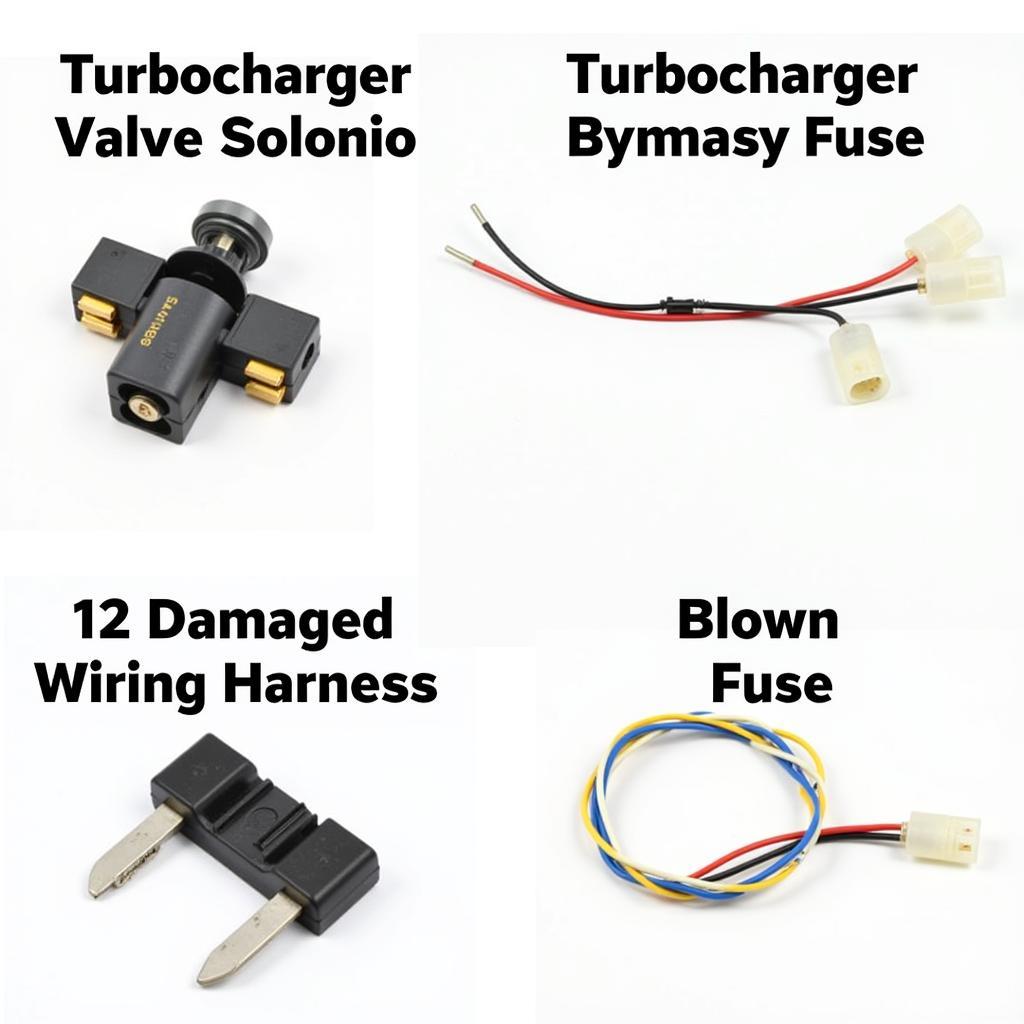Your cart is currently empty!

Understanding and Fixing the P0033 Ross Tech Code
The dreaded check engine light – a beacon of uncertainty for car owners everywhere. When it illuminates, a wave of questions follows. One common culprit behind this automotive anxiety is the P0033 Ross Tech code. This article dives into the intricacies of this code, explains its meaning, symptoms, common causes, and most importantly, provides you with a clear path towards resolution.
What Does the P0033 Code Mean?
In essence, the P0033 code, often accompanied by a “Circuit Malfunction” note, points to a problem with your vehicle’s turbocharger or supercharger bypass valve control circuit. This valve, also known as a wastegate, plays a crucial role in regulating boost pressure. The code specifically indicates an issue with the electrical circuit controlling this valve, not necessarily a mechanical fault with the valve itself.
Symptoms of a P0033 Code
Ignoring a P0033 code can lead to significant engine problems and costly repairs down the line. Here are some telltale signs that your car might be experiencing this issue:
- Check Engine Light: This is the most obvious indicator.
- Reduced Engine Power: You might notice a significant decrease in acceleration.
- Turbocharger/Supercharger Not Engaging: The engine may lack its usual power boost.
- Unusual Engine Noises: A hissing sound could indicate a boost leak.
- Poor Fuel Economy: Your car might start guzzling more fuel than usual.
Common Causes of a P0033 Code
 Common Causes of P0033 Code
Common Causes of P0033 Code
Several factors can trigger a P0033 code. Identifying the root cause is key to effective repair. Here are the most common culprits:
- Faulty Turbocharger/Supercharger Bypass Valve Solenoid: This solenoid acts as the valve’s brain, receiving signals from the engine control unit (ECU) to regulate boost pressure. A malfunctioning solenoid can disrupt this process.
- Damaged Wiring or Connectors: The wiring harness connecting the solenoid to the ECU can become damaged due to wear and tear, heat, or rodents. A short circuit or open circuit in this wiring can interrupt communication between the ECU and the solenoid.
- Faulty Engine Control Unit (ECU): While less common, a faulty ECU can misinterpret data or send incorrect signals, potentially triggering the P0033 code.
- Vacuum Leaks: For vehicles that use a vacuum-controlled bypass valve, leaks in the vacuum lines can disrupt the pressure differential needed to operate the valve properly.
- Turbocharger/Supercharger Issues: While the code itself points to an electrical issue, a problem with the turbocharger or supercharger itself, such as a sticking wastegate, can sometimes indirectly trigger the P0033 code.
Diagnosing and Fixing a P0033 Code
Pinpointing the exact cause of the P0033 code requires a systematic approach:
- Read the Code: Use a reliable OBD-II scanner to confirm the presence of the P0033 code.
- Visual Inspection: Carefully inspect the wiring harness and connectors around the bypass valve solenoid for any visible damage, corrosion, or loose connections.
- Test the Solenoid: With the engine off, use a multimeter to check the solenoid’s resistance. Compare your readings to the manufacturer’s specifications to determine if the solenoid is functioning correctly.
- Check for Vacuum Leaks: If your vehicle uses a vacuum-controlled bypass valve, inspect the vacuum lines for leaks.
- Consult a Professional: If you’re uncomfortable working with electrical components or suspect a more complex issue like an ECU problem, it’s best to seek assistance from a qualified mechanic or a specialized automotive electrician.
Preventing Future P0033 Codes
While some causes, like ECU malfunctions, are difficult to predict, proactive maintenance can significantly reduce the risk of encountering a P0033 code again:
- Regular Inspections: Regularly inspect your engine bay for any signs of wear and tear, including frayed wires, loose connections, or damaged components.
- Prompt Repairs: Address any engine-related issues promptly, especially those involving the turbocharger/supercharger system.
- Quality Parts: When replacing components like the bypass valve solenoid, opt for high-quality parts from reputable brands to ensure longevity and reliability.
Conclusion
The P0033 Ross Tech code, while potentially concerning, is often resolvable with accurate diagnosis and timely repair. Understanding the code’s meaning, recognizing the symptoms, and knowing the common causes empowers you to address the issue effectively. Remember, proactive maintenance and prompt attention to any engine-related issues can go a long way in preventing this code from disrupting your journeys again.
If you’re experiencing a P0033 code and need expert assistance, feel free to connect with us at VCDStool. Our team of experienced technicians is here to help you diagnose and resolve any automotive issues you might be facing.
Contact VCDStool today at +1 (641) 206-8880 and our email address: vcdstool@gmail.com or visit our office at 6719 W 70th Ave, Arvada, CO 80003, USA.
by
Tags:
Comments
One response to “Understanding and Fixing the P0033 Ross Tech Code”
[…] p0033 ross tech codes, often numerical and prefixed with a “P”, offer valuable insights into your BMW’s electronic systems. These codes, generated by the onboard computer, pinpoint areas needing attention. Whether you’re a DIY enthusiast or prefer professional help, understanding these codes empowers you to make informed decisions about your vehicle’s maintenance. […]
Leave a Reply